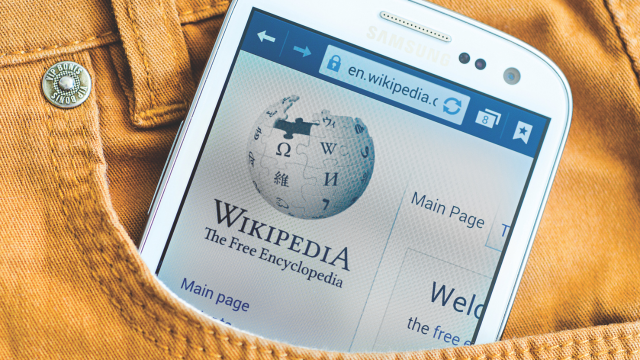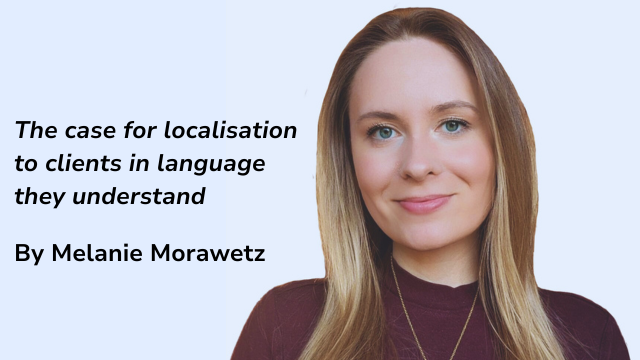-
QUALIFICATIONS
- For Linguists Worldwide
- For UK Public Services
- Preparation
- Policies & Regulation
-
MEMBERSHIP
- Join CIOL
- Professional Membership
- Affiliate Membership
- Chartered Linguist
- Already a member?
- Professional conduct
- Business & Corporate Partners
-
LANGUAGE ASSESSMENTS
- English
- All Other Languages
-
CPD & EVENTS
- Webinars & Events
- CIOL Conferences
- Networks
- CIOL Mentoring
-
NEWS & VOICES
- News & Voices
- CIOL eNews
- CIOL Awards
- The Linguist Magazine
- Jobs & Ads
-
RESOURCES
- For Translators & Interpreters
- For Universities & Students
- Standards & Norms
- CIOL & AI
- All Party Parliamentary Group
- In the UK
- UK Public Services
- Find-a-Linguist
A visual world
Jemina Napier reports on developments in sign language research, and why deaf people are finally being heard
 There are still common misperceptions about signed languages, so it is worth busting some myths. The ways in which language tends to be discussed do not (typically) take signed languages into account. The terminology is fundamentally phonocentric: the very word ‘language’ alludes to ‘the tongue’, and there is a temptation to map signed languages directly onto parameters defined by our assumptions about language in its spoken and written forms.
There are still common misperceptions about signed languages, so it is worth busting some myths. The ways in which language tends to be discussed do not (typically) take signed languages into account. The terminology is fundamentally phonocentric: the very word ‘language’ alludes to ‘the tongue’, and there is a temptation to map signed languages directly onto parameters defined by our assumptions about language in its spoken and written forms.
But signed languages are not merely manual versions of spoken languages. A sign does not necessarily correspond directly to a word, and the two language modalities operate using different grammatical frameworks. In fact, there is an increasing body of work on sign language linguistics, describing the properties of different signed languages throughout the world.
People often ask me, ‘Why isn’t there only one sign language? Wouldn’t it be easier?’ My response is, ‘Wouldn’t it be easier to have only one spoken language? Which one would you choose?’ It is the same principle: both spoken and signed language multilingualism should be valued.
The World Federation of the Deaf (WFD) reports that there are approximately 70 million deaf sign language users throughout the world. This does not take into account the number of hearing people that use sign language at home or at work. The British Deaf Association (BDA) estimates that there are 70,000 deaf British Sign Language (BSL) users in the UK, and a total of 125,000 BSL users. There are 138 sign languages listed on Ethnologue, and 33 legally recognised signed languages in countries throughout the world. BSL is one of the most recently recognised, through the BSL (Scotland) Act, which was ratified by the Scottish Parliament in September 2015. This means that Scottish public institutions have a responsibility to promote the use of BSL, through providing either direct services in BSL or professional BSL interpreting to ensure access to services.
Setting the agenda
The sign language research team at Heriot-Watt University (HWU) in Edinburgh draws on linguistic, sociolinguistic and applied linguistic frameworks for the analysis of sign language structure, usage and direct or mediated communication. I am a member of the BSL team and the newly appointed Director of the Centre for Translation and Interpreting Studies in Scotland, with 30 years’ experience as an interpreter working between English and British Sign Language (BSL), Australian Sign Language (Auslan) or International Sign.
We are a mixed deaf-hearing multilingual team. In addition to BSL, we have Dutch Sign Language, American Sign Language, Belgian-French Sign Language, Belgian-Flemish Sign Language and Danish Sign Language as our working sign languages. We have seven permanent members of academic staff (three deaf, four hearing), three deaf postdoctoral fellows, one deaf research assistant, three hearing BSL interpreters and ten postgraduate research students (four deaf, six hearing).
We have been nominated for – and won – various awards for our research, including the Guardian University Award for Social and Community Impact 2017. Our principle of doing research with signing deaf communities ensures our research agendas are informed by our networks with local, national and international deaf sign language users and sign language interpreters; our experience as sign language users, interpreter practitioners, educators and researchers; and our relationships with key stakeholder organisations.
In July 2017, we signed a Memorandum of Understanding with the BDA, showing a commitment to working collaboratively on research to benefit deaf BSL users. Furthermore, several members of the team are involved in boards or expert groups for local, national or international deaf and interpreting organisations, such as the Association of Sign Language Interpreters in the UK and the WFD.
In order to conduct research that is meaningful and relevant for participants, we involve deaf people and interpreters directly in research and policy making, drawing on their knowledge, experience and agendas. We see this as our collaborative responsibility to work with different stakeholder groups to develop best practice models.
Making a difference
A large proportion of our research focuses on ‘understanding interpreting’: examining sign language interpreter-mediated communication in different contexts. Various members of the team have been – or are currently – involved in projects that investigate how interpreting happens in police, court, classroom, medical, mental health, theatre, employment, political and conference settings; and also how interpreting and interpreters are experienced and perceived by stakeholder groups.
Several members of the HWU team are also involved in research that documents the linguistic structure and sociolinguistic features of BSL, and the usage of BSL or other signed languages in different contexts between deaf and hearing people. Two newer areas of research focus on how deaf sign language users communicate across borders, giving consideration to mobility among tourists, migrants, immigrants and refugees; and the lived experiences of deaf sign language users in their everyday lives.
Other projects focus on sign language and interpreting pedagogy: how to teach sign language as a second language to interpreting students; how to deliver BSL as a language in schools; how deaf or hearing adults might learn a signed language later in life; how interpreter educators deal with job demands and resources; and how we can engage in interdisciplinary training of people studying sign language interpreting and other disciplines (such as psychology and nursing) to prepare for working together in the real world.
All of these projects have the potential to make a significant difference not only to the lives of deaf sign language users, but also to the professional practice of sign language interpreters, by providing an evidence base to inform policy, practice and pedagogy. Much of this research has led to policy changes, for example, through the development of best practice guidelines.
The HWU BSL team are committed to engaging with deaf communities and interpreting practitioners about our research, so we always ensure that information is available in both sign language and English, and our research results are reported in various ways, including blog and vlog posts, community information events, the EdSign lecture series (held jointly with the University of Edinburgh and Queen Margaret University), and through the creation of short films or documentaries.
To find out more about the work of the BSL team at HWU, subscribe to Lifeinlincs.org, follow them on Twitter or Facebook.
This article is based on a talk given to CIOL’s Scottish Society. For the society’s forthcoming events, see www.ciol.org.uk/scottish-society.
Significant projects
Translated Deaf Self. An innovative approach to re-interpreting Deaf Studies and Interpreting research through art at Manchester University;
DESIGNS Deaf Employment for Sign Language Users in the EU builds on previous work to develop practical training resources for employers to increase their awareness of the deaf community, sign language and interpreting.
BSL SignBank. BSL corpus and information site.
Justisigns. Improving legal sign language interpreting by identifying issues and providing training for professionals working in this field.
Medisigns. Improving medical interpreting in sign language through training and resources.
Practising sign language interpreter Dr Jemina Napier is Professor of Intercultural Communication and Director of the Centre for Translation and Interpreting Studies in Scotland at Heriot-Watt University.
Filter by category
More
The Chartered Institute of Linguists (CIOL), Incorporated by Royal Charter, Registered in England and Wales Number RC 000808 and the IoL Educational Trust (IoLET), trading as CIOL Qualifications, Company limited by Guarantee, Registered in England and Wales Number 04297497 and Registered Charity Number 1090263. CIOL is a not-for-profit organisation.








